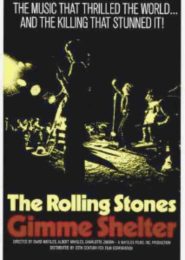New Orleans: A Living Museum of Music (2011)
New Orleans: A Living Museum of Music is an intimate exploration of the rich musical heritage of New Orleans, a city renowned for its vibrant and diverse musical traditions. Narrated by actor Wendell Pierce (known for his role in HBO’s “The Wire”), the documentary delves into the heart of this iconic American city, where music is not just entertainment but a way of life.
The film introduces us to the dedicated individuals who work tirelessly to preserve and nurture New Orleans’ musical legacy. Here are some key aspects covered in the documentary:
- Local Musicians and Educators: We meet local musicians and educators who serve as mentors to young talent. They pass down the traditions, techniques, and soul of New Orleans music to the next generation.
- Museum Curators: Behind the scenes, museum curators care for precious musical artifacts and treasures. These artifacts represent the city’s history and the artists who shaped its sound.
- Historians and Archivists: The documentary highlights the tireless efforts of historians and archivists who research and document the stories behind the music. Their work ensures that the city’s musical heritage remains alive and accessible.
- Activists: In the aftermath of Hurricane Katrina, many musicians lost their livelihoods. Activists stepped in to protect, heal, and inspire these artists. Their commitment to rebuilding the music scene is inspiring.
- Ellis Marsalis: The revered jazz pianist Ellis Marsalis, a central figure in New Orleans’ music scene, shares his insights. He emphasizes that the city itself is a “living museum”—a manifestation of participation and cultural continuity.
- Congo Square: The film explores Congo Square, where enslaved people of African descent could legally drum, dance, sing, and practice their culture during the antebellum era. The rhythms of Africa survived in New Orleans through this unique space.
- Musical Performances: We witness performances by jazz musicians, brass bands, and Mardi Gras Indians. From the historic French Quarter to local clubs, the music permeates every corner of the city.
- Louis Armstrong’s Cornet: The Louisiana State Museum houses Louis Armstrong’s first cornet, a “holy grail” of musical instruments. Armstrong learned to play it at the Municipal Boys Home in New Orleans.
- Mardi Gras Indians: These vibrant and colorful groups have been part of New Orleans’ carnival tradition for 150 years. Their elaborate costumes and rhythmic parades celebrate the city’s cultural diversity.
New Orleans: A Living Museum of Music captures the essence of a city where music is more than notes—it’s a heartbeat, a celebration, and an intangible treasure that continues to thrive. Whether on the streets, in clubs, or within the walls of museums, New Orleans’ music lives on, echoing through time and touching the souls of all who experience it.




